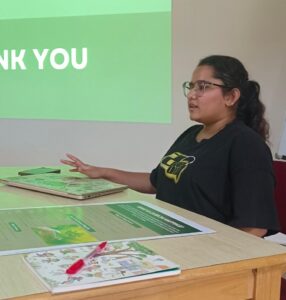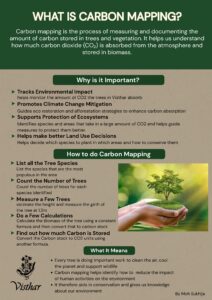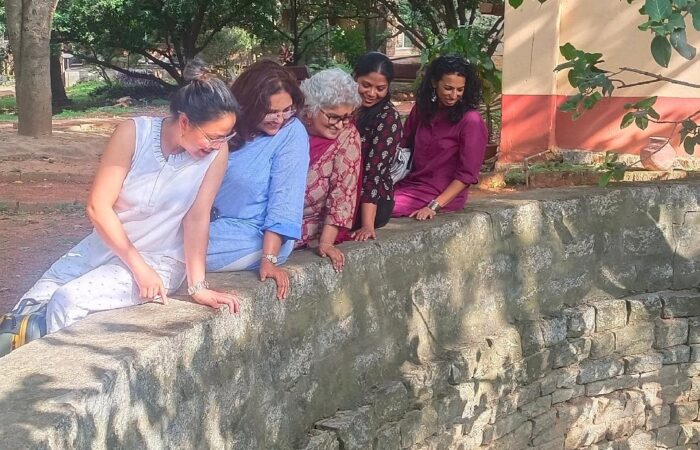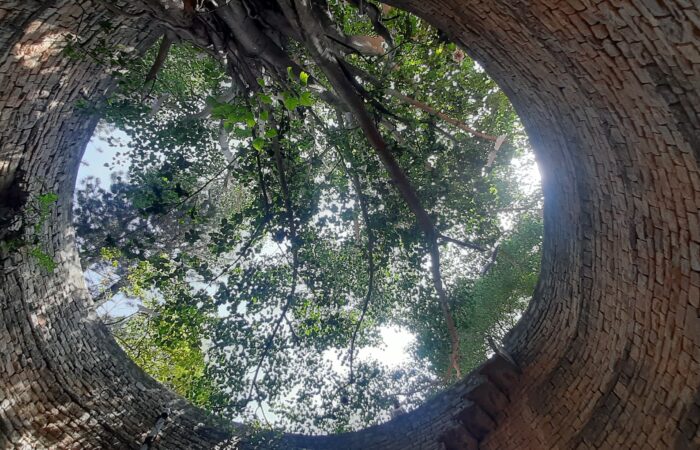Over the past few weeks, I’ve had the opportunity to conduct a carbon mapping study at Visthar, a campus in Bengaluru renowned for its social justice and environmental initiatives. This wasn’t just simply an opportunity; it was a hands-on effort to understand how the trees around us are quietly, persistently fighting climate change.
My goal was to quantify how much carbon dioxide is being  absorbed by eight key tree species on the Visthar campus, which included Coconut, Mango, Neem, Tamarind, Raintree, Sapota, Jamun, and Jackfruit.
absorbed by eight key tree species on the Visthar campus, which included Coconut, Mango, Neem, Tamarind, Raintree, Sapota, Jamun, and Jackfruit.
I used non-destructive, ground-based methods: measuring tree height, girth at breast height (DBH), calculating above-ground and below-ground biomass using standard formulas, and finally estimating how much carbon each tree has stored over its lifetime. I then converted these values into their carbon dioxide equivalent, because CO₂ is the language of climate policy, and it’s how we measure impact.
Some findings were expected: Mango and Raintree trees topped the charts in terms of annual carbon sequestration, thanks to their size and growth rate. One Raintree alone absorbs 448 kg of CO₂ per year. Others, like Sapota and Neem, showed lower annual carbon uptake but offered long-term stability, shade, and medicinal benefits. Coconut trees, despite being the most numerous (185 on campus), sequestered less carbon per tree due to their slim trunks and moderate height.
In total, the 289 trees of these species present on the Visthar campus accounted for an annual sequestration of 4.29 metric tons of CO₂. That’s a meaningful number, and it doesn’t even include all the other species and undergrowth present on campus.
This project has helped me see trees in a new way. We often think of forests as the lungs of the planet, but even small green pockets in urban and semi-urban areas matter deeply. They’re absorbing carbon, regulating microclimates, supporting biodiversity, and improving our mental health, all while asking for nothing in return.
The process wasn’t without its limitations; some tree heights were estimated visually, wood densities were drawn from existing literature, and I only looked at eight species. Still, the methodology I followed provides a strong and replicable baseline for anyone interested in doing similar work.
What excites me most is the potential for this data to inform local planning. Carbon mapping isn’t just about numbers; it’s about action. We now know which species to prioritize for planting. We can educate others on the hidden role our trees play. And we can design greener campuses, schools, neighborhoods, and cities with a clear focus on climate resilience.
This project has reinforced a simple truth: planting and protecting trees is not just a symbolic gesture. It’s measurable climate action.
I’m deeply grateful to Visthar for allowing me to experience this and learn so much more about not only myself but also my surroundings, and for being a space that nurtures this kind of learning and engagement.
Let’s keep growing.
Moh Sukhija




 absorbed by eight key tree species on the Visthar campus, which included Coconut, Mango, Neem, Tamarind, Raintree, Sapota, Jamun, and Jackfruit.
absorbed by eight key tree species on the Visthar campus, which included Coconut, Mango, Neem, Tamarind, Raintree, Sapota, Jamun, and Jackfruit.

